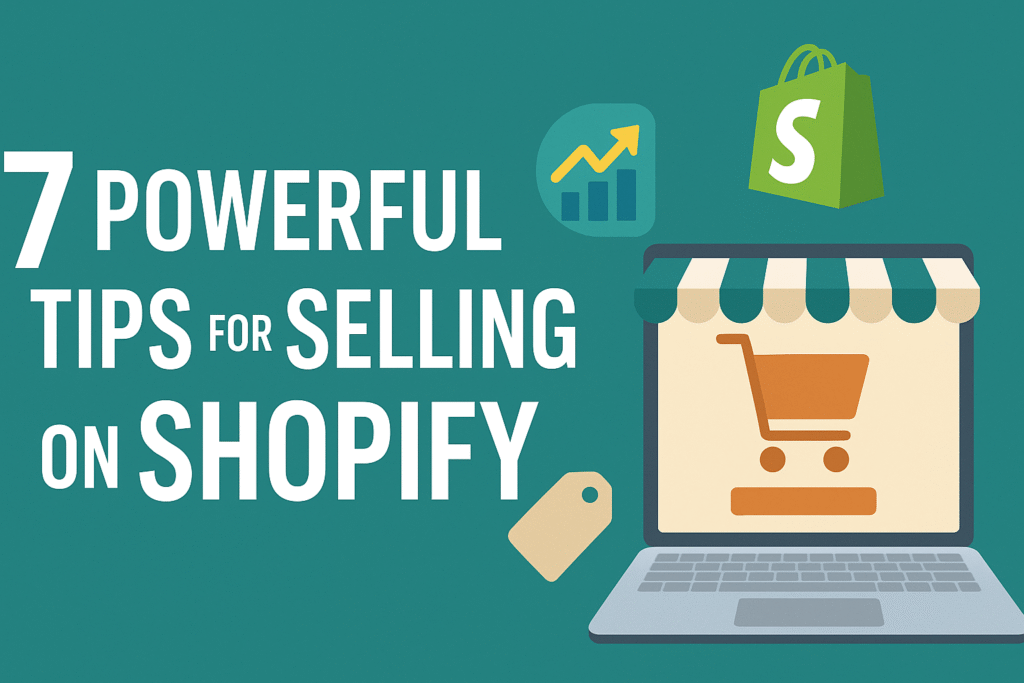Selling on Shopify in 2025 offers entrepreneurs a robust platform to build and scale their eCommerce businesses. Whether you’re a seasoned seller or a beginner, this comprehensive guide will walk you through 12 essential steps to set up and grow your Shopify store effectively. We’ll also explore how tools like Afilpro can enhance your product research and marketing strategies.

1. Identify Your Niche and Target Audience
Before setting up your store, determine the niche you want to focus on. A well-defined niche helps in targeting the right audience and reduces competition. Utilize tools like Google Trends and keyword research platforms to analyze market demand and trends.
2. Conduct Thorough Product Research
Selecting the right products is crucial. Use product research tools to identify trending items, analyze competition, and assess profitability. Look for products with high demand and low competition to maximize your chances of success.
3. Set Up Your Shopify Store
Sign up for a Shopify account and choose a plan that suits your needs. Customize your store’s appearance using themes, and ensure it’s mobile-responsive. Add essential pages like About Us, Contact, and Privacy Policy to build trust with visitors.
4. Add Products and Optimize Listings
Upload your products with high-quality images and compelling descriptions. Use relevant keywords in product titles and descriptions to improve SEO. Organize products into collections to enhance navigation and user experience.
5. Configure Payment and Shipping Settings
Set up payment gateways like Shopify Payments, PayPal, or Stripe to accept payments securely. Define your shipping zones, rates, and methods. Consider offering free shipping to attract more customers.
6. Implement Effective Marketing Strategies
Promote your store using various marketing channels:
- Email Marketing: Build an email list and send newsletters with promotions and updates.
- Social Media: Engage with your audience on platforms like Instagram, Facebook, and TikTok.
- Content Marketing: Create blog posts and videos related to your products to drive organic traffic.
- Paid Advertising: Run targeted ads on Google and social media to reach potential customers.
7. Leverage SEO Best Practices
Optimize your store for search engines to increase visibility:
- Keyword Research: Identify and use relevant keywords in your content.
- Meta Tags: Write compelling meta titles and descriptions for each page.
- Alt Text: Add descriptive alt text to images for better accessibility and SEO.
- Site Speed: Ensure your website loads quickly to reduce bounce rates.
8. Utilize Analytics to Monitor Performance
Track your store’s performance using analytics tools:
- Shopify Analytics: Monitor sales, traffic, and customer behavior.
- Google Analytics: Gain deeper insights into user demographics and behavior.
- Heatmaps: Understand how visitors interact with your site to optimize layout and design.
9. Provide Excellent Customer Service
Offer prompt and helpful customer support to build trust and encourage repeat business:
- Live Chat: Implement live chat to assist visitors in real-time.
- FAQs: Create a comprehensive FAQ section to address common queries.
- Return Policy: Clearly outline your return and refund policies.
10. Encourage Customer Reviews and Testimonials
Positive reviews enhance credibility and influence purchasing decisions:
- Follow-Up Emails: Request reviews after a purchase.
- Incentives: Offer discounts or freebies in exchange for honest reviews.
- Display Reviews: Showcase testimonials prominently on product pages.
11. Scale Your Business Strategically
As your business grows, consider scaling strategies:
- Expand Product Lines: Introduce new products based on customer feedback and market trends.
- International Shipping: Offer shipping to additional countries to reach a broader audience.
- Automate Processes: Use apps to automate inventory management, order fulfillment, and marketing.
12. Enhance Product Research with Afilpro
Afilpro is a powerful tool designed to streamline your product research process:
- Trend Analysis: Identify trending products and niches with real-time data.
- Competitor Insights: Analyze competitors’ top-selling products and strategies.
- Keyword Suggestions: Discover high-performing keywords to optimize your listings.
- Performance Tracking: Monitor product performance to make informed decisions.
By integrating Afilpro into your workflow, you can make data-driven decisions that enhance your store’s profitability.
Conclusion
Selling on Shopify in 2025 requires a strategic approach, from selecting the right niche to leveraging advanced tools like Afilpro. By following these 12 steps, you can build a successful eCommerce business that stands out in a competitive market.
References
- Shopify. “How To Sell Online: Get Started in 9 Simple Steps (2025).” https://www.shopify.com/blog/how-to-sell-online
- Shopify. “Product Research: How To Discover Great

